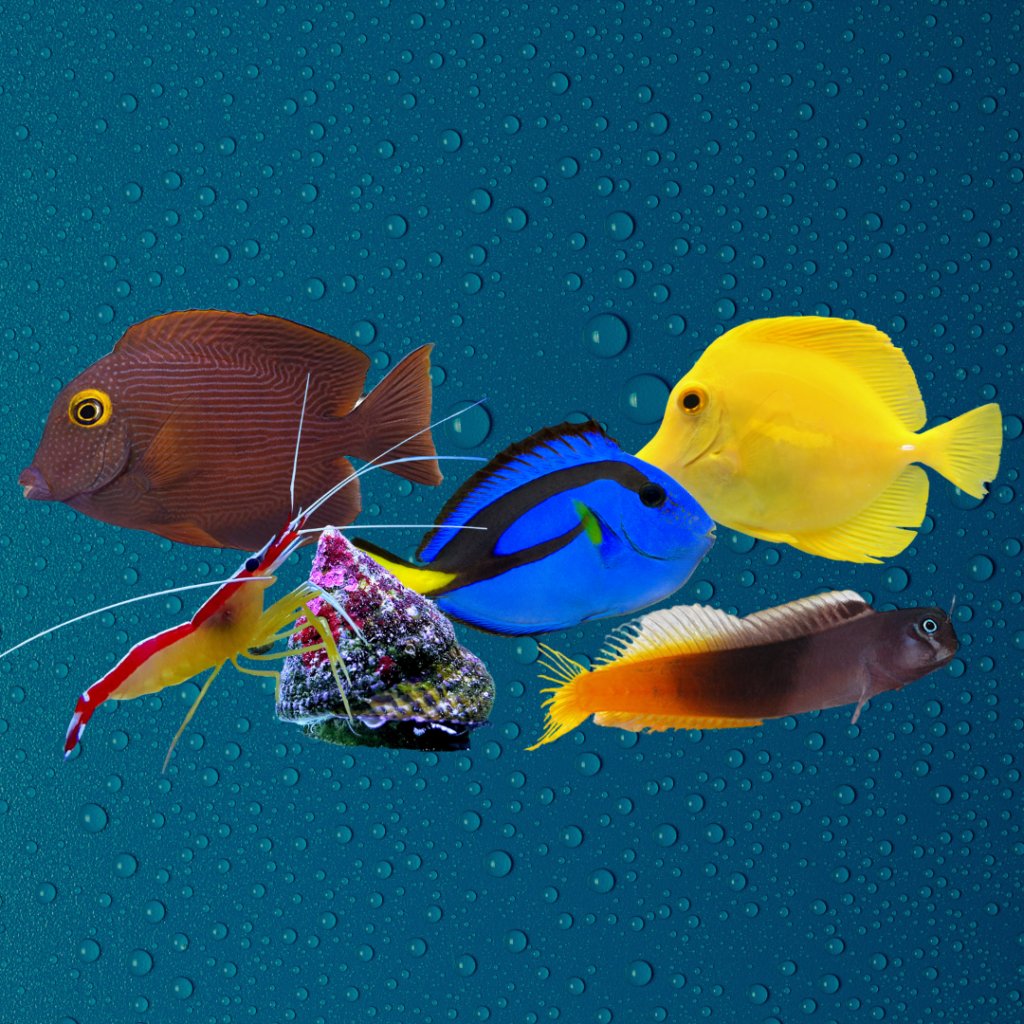Algae growth is a common issue in saltwater aquariums, and it can be challenging to manage. One natural and effective solution is to introduce algae eating fish to your tank. The following fish consume various types of algae, helping to maintain a clean and healthy environment.
In this article, we’ll explore the best algae-eating fish and inverts for saltwater tanks and discuss essential facts about each one, such as size, temperament, and reef compatibility.
Related: Saltwater Algae Types: Identification, Causes, and Management
Yellow Tang

The Yellow Tang is a highly popular algae-eating fish, known for its vibrant yellow coloration and active swimming patterns. This fish is native to the Indo-Pacific Ocean and primarily feeds on filamentous and hair algae in the wild.
They can grow up to 8 inches in length and have a life expectancy of 10-15 years in a well-maintained aquarium. Yellow Tangs require a tank of at least 100 gallons with plenty of live rock to graze on and hide in.
They are generally peaceful and reef-safe, making them an excellent addition to a mixed community tank. However, they may become territorial with other tangs or similarly-shaped fish.
As of now, Yellow tangs have become very expensive due to a fishing restriction in Hawaii. I would try to find captive bred yellow tangs if possible. Captive bred yellow tangs will not only be cheaper, but are also more likely to eat frozen and pellet foods right away.
How To Get Rid Of Green Hair Algae In a Saltwater Tank
Blue Tang
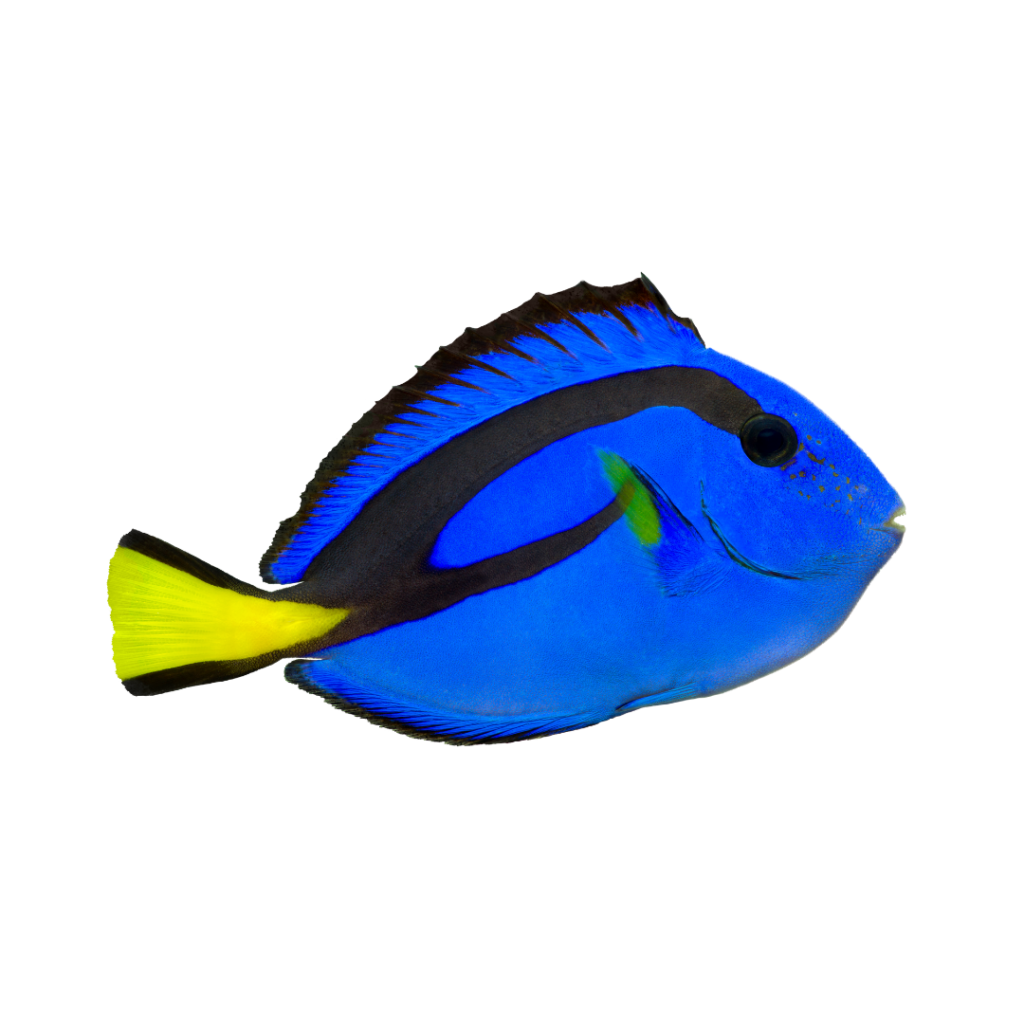
The Blue Tang, also known as the Regal Tang or Palette Surgeonfish, is famous for its unique color pattern, featuring a deep blue body and bright yellow tail.
Found in the Indo-Pacific Ocean, these fish can grow up to 12 inches in length and require a tank of at least 120 gallons. They are known for their algae-consuming abilities, primarily feeding on macroalgae in their natural habitat.
While they can be kept in reef tanks, it is important to monitor them closely as they may sometimes nip at coral polyps. Blue Tangs are generally peaceful, but they can become territorial with other surgeonfish or tangs in confined spaces. It is essential to provide ample swimming room and hiding spots for these fish.
Related: Best Fish For a 100 Gallon Tank
Lawnmower Blenny
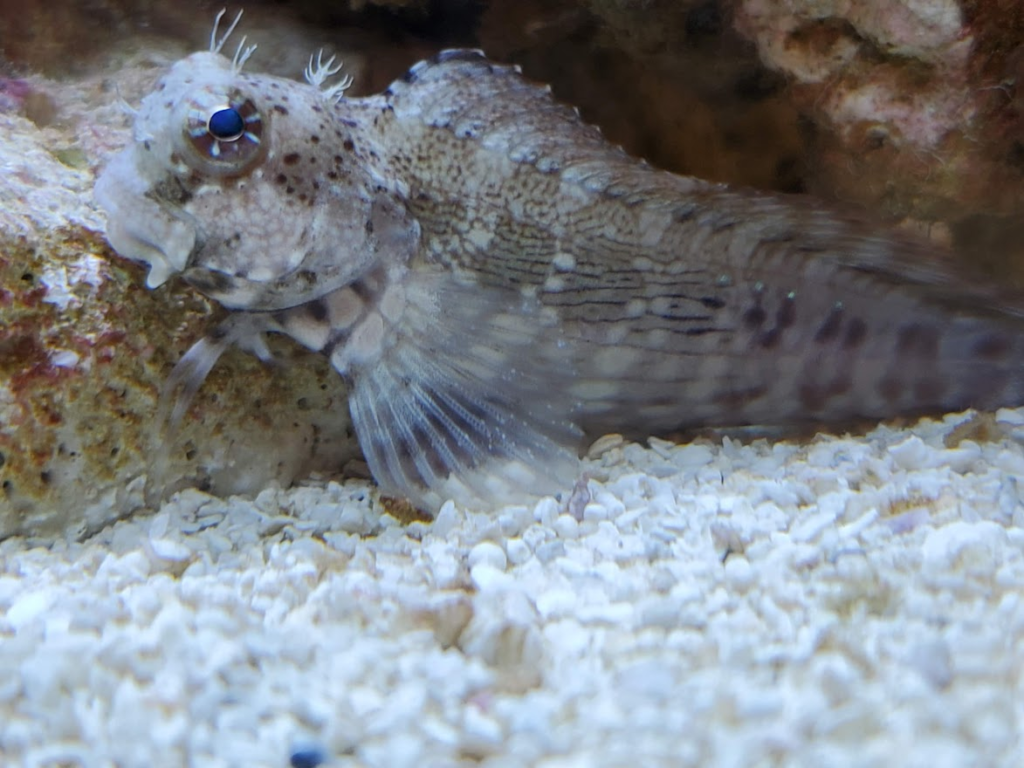
The Lawnmower Blenny, also known as the Algae Blenny or Sailfin Blenny, is a small, bottom-dwelling fish that is highly efficient at consuming algae, particularly green hair and diatoms.
They are native to the Indo-Pacific region and can grow up to 5 inches in length. This fish requires a tank of at least 30 gallons with a sandy substrate and plenty of live rock for grazing and hiding.
They are generally peaceful and can be kept in reef aquariums, but care should be taken when housing them with smaller ornamental shrimp or slow-moving invertebrates.
Foxface Rabbitfish
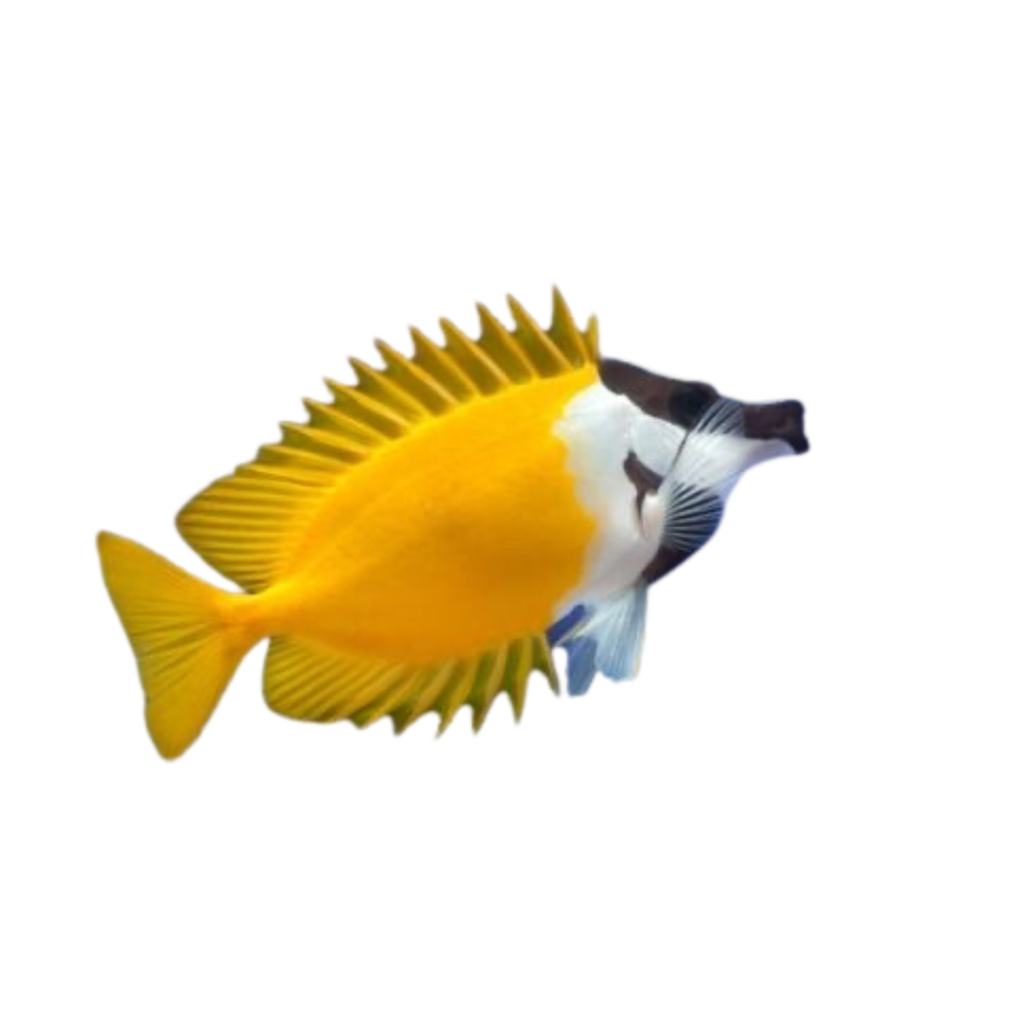
The Foxface Rabbitfish is known for its unique, rabbit-like face and bold coloration. This algae-eating fish is native to the Western Pacific Ocean and grows up to 9 inches in length.
They primarily feed on macroalgae and require a tank of at least 125 gallons with plenty of swimming space and live rock. Foxface Rabbitfish are generally peaceful and reef-safe, but their venomous spines can cause painful injuries if mishandled. Exercise caution when handling these fish or performing maintenance in their tank.
Kole Tang
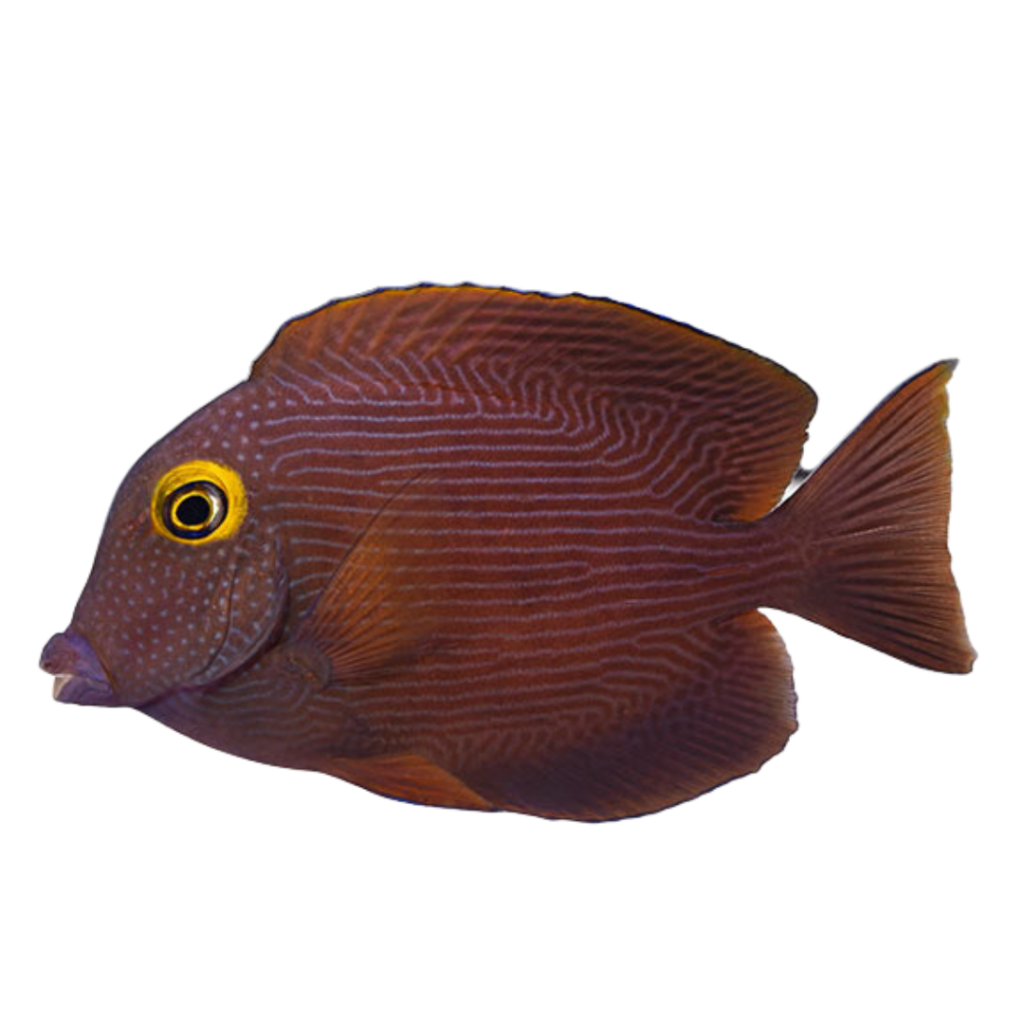
The Kole Tang, also known as the Yellow-eyed Tang or Spotted Bristletooth, is a medium-sized tang that is highly efficient at consuming various types of algae, including film and diatom algae.
They are native to the Central Pacific Ocean and grow up to 7 inches in length. Kole Tangs require a tank of at least 100 gallons with plenty of room to swim
Related: 11 Best Low Maintenance Fish For a Saltwater Tank
Bicolor Blenny
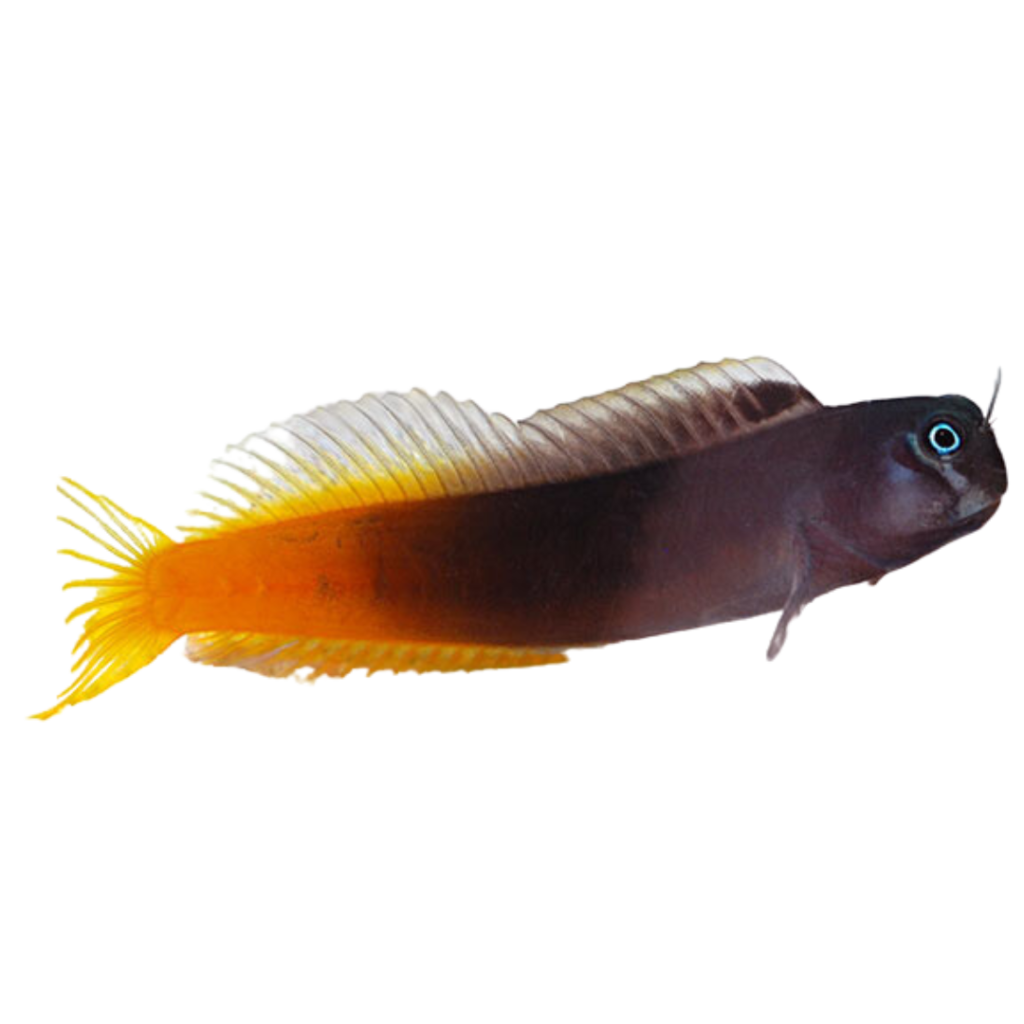
The Bicolor Blenny is a small, colorful fish that is native to the Indo-Pacific region. It is known for its ability to consume a variety of algae, including filamentous and hair algae.
This fish grows up to 4 inches in length and requires a tank of at least 30 gallons with plenty of live rock and hiding spots. The Bicolor Blenny is generally peaceful and reef-safe, but it may nip at coral polyps or small invertebrates if not provided with enough algae to eat.
Related: Best Small Saltwater Fish For a Nano Tank
Sea Urchins
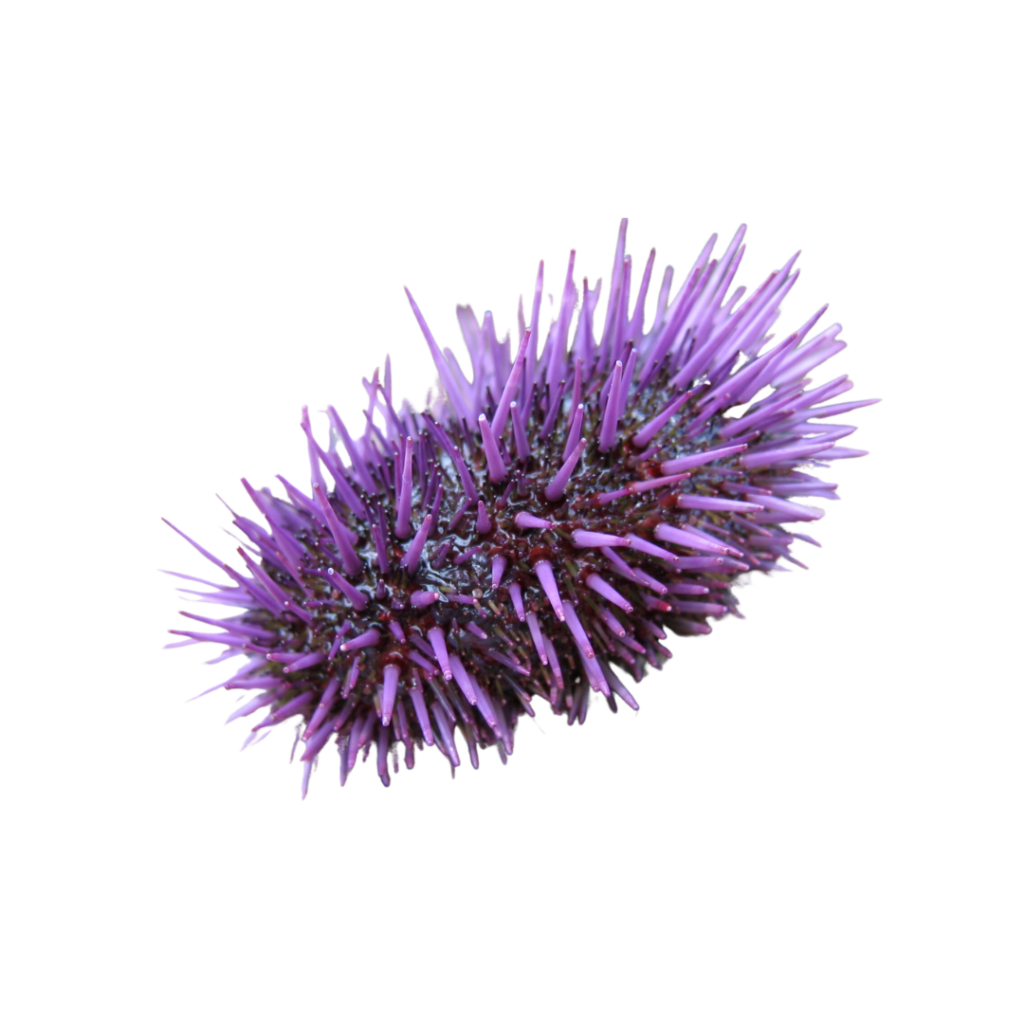
Sea Urchins are invertebrates that can play a significant role in controlling algae in a saltwater tank. They come in various shapes, sizes, and colors, with some of the most popular species being the Tuxedo Urchin, Pincushion Urchin, and Longspine Urchin.
Sea Urchins graze on algae, helping to keep the tank clean and healthy. While they are generally reef-safe, some species may consume coraline algae or disturb live rock structures.
Turbo Snails

Turbo Snails are large, robust snails that are efficient at consuming algae, particularly brown diatoms and green hair algae. They are native to the Pacific Ocean and can grow up to 3 inches in diameter.
Turbo Snails require a tank with stable water parameters and plenty of live rock to graze on. These snails are reef-safe and generally peaceful, but they may knock over small corals or invertebrates if not given enough space.
Banded Trochus Snails
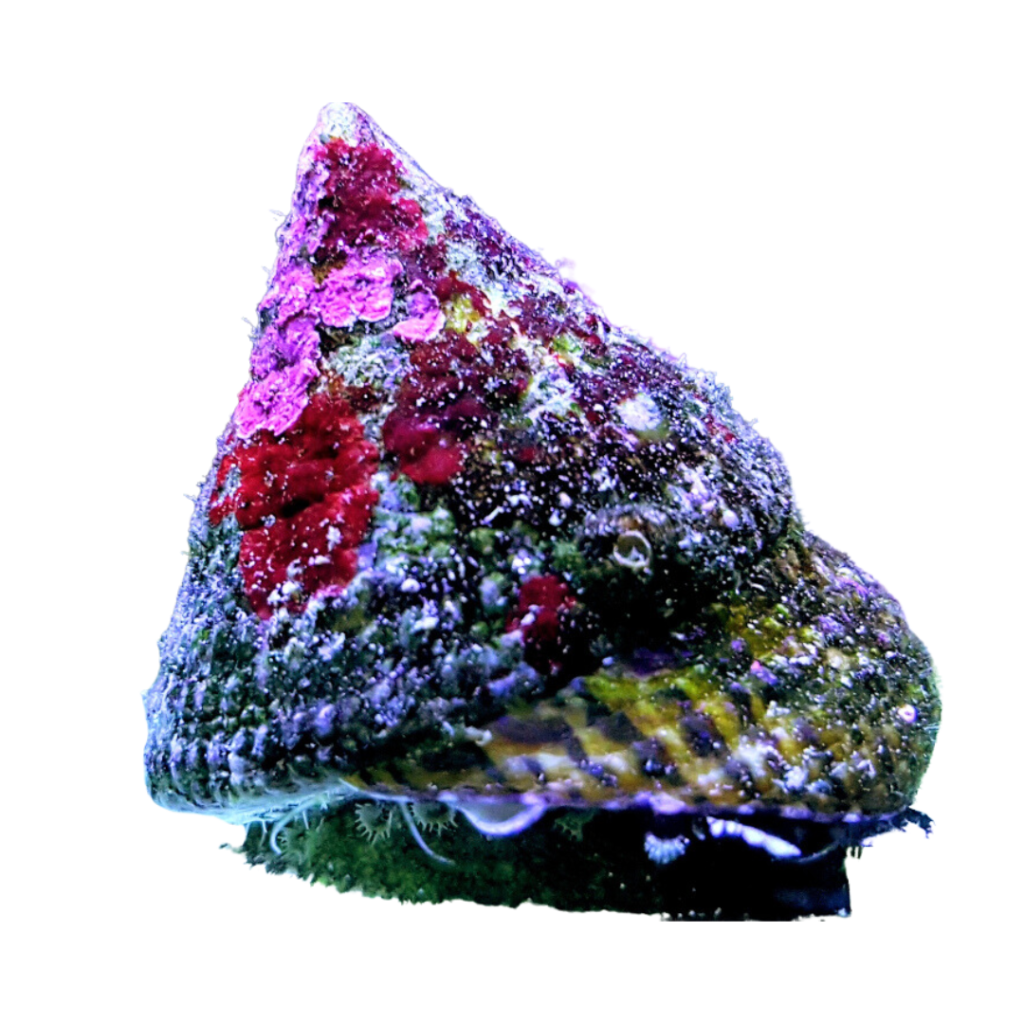
Banded Trochus Snails are popular algae-eating snails known for their attractive, conical shell and banded coloration. They are native to the Indo-Pacific region and can grow up to 1.5 inches in diameter.
These snails are efficient at consuming various types of algae, including diatoms, hair algae, and cyanobacteria. Trochus Snails are reef-safe and can be housed in tanks of at least 20 gallons with stable water parameters and plenty of live rock.
Scarlet Skunk Cleaner Shrimp
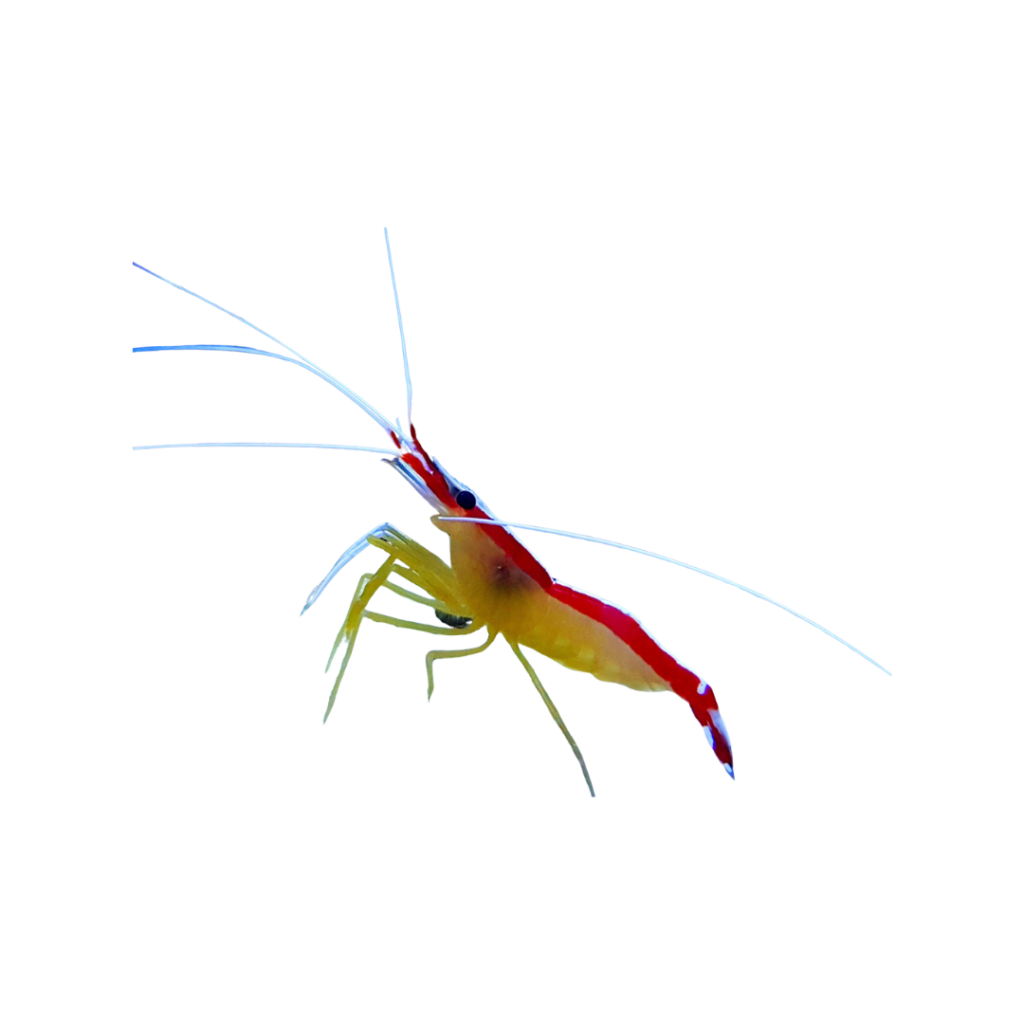
The Scarlet Skunk Cleaner Shrimp is a colorful and active shrimp that can help control algae in a saltwater tank. They are native to the Indo-Pacific region and can grow up to 2 inches in length.
While they primarily consume parasites and dead tissue from fish, they will also graze on algae if available. These shrimp are reef-safe and require a tank of at least 20 gallons with plenty of hiding spots.
Check out our article on Peppermint shrimp, another shrimp species who have a huge appetite for Aiptasia anemones
Sea Hares
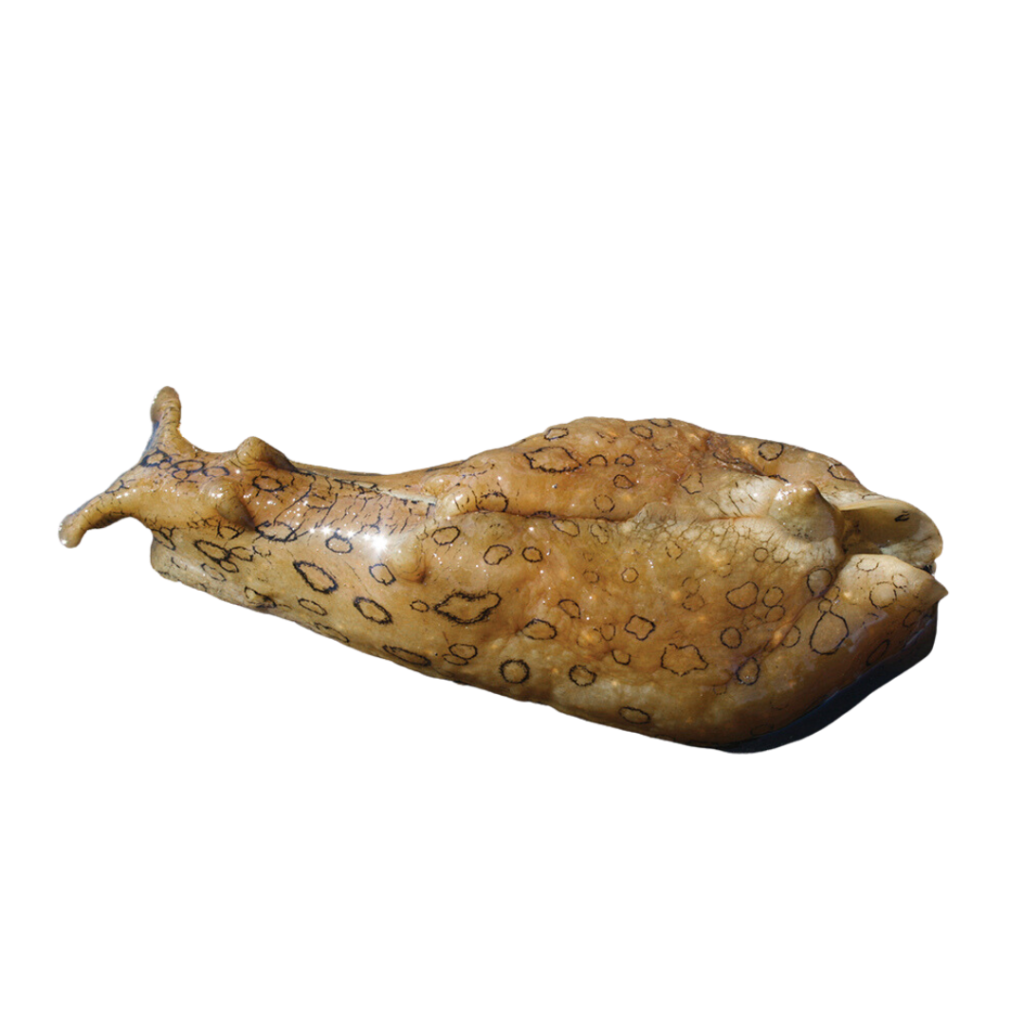
Sea Hares are large, slug-like invertebrates known for their ability to consume large amounts of hair algae quickly. They are native to various oceans worldwide and can grow up to 12 inches in length, depending on the species.
Sea Hares are generally reef-safe, but they may consume desirable macroalgae in addition to nuisance algae. They require a tank with stable water parameters and plenty of algae to graze on.
Sailfin Tang
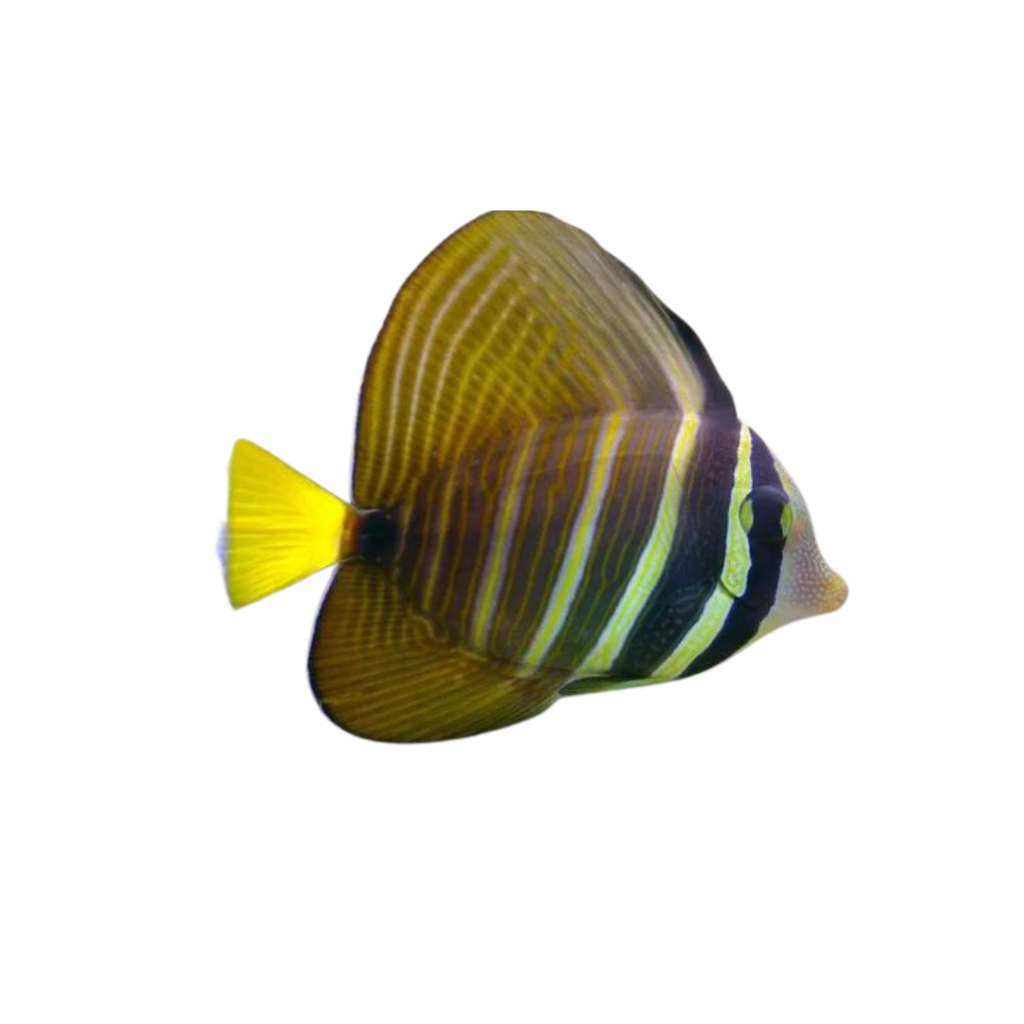
The Sailfin Tang is a large, active fish that is native to the Indo-Pacific region. They are known for their ability to consume a variety of algae, including filamentous and hair algae.
This fish can grow up to 15 inches in length and requires a tank of at least 180 gallons with plenty of live rock and swimming space. Sailfin Tangs are generally peaceful and reef-safe, but they may become territorial with other tangs or similarly-shaped fish.
Diamond Watchman Goby
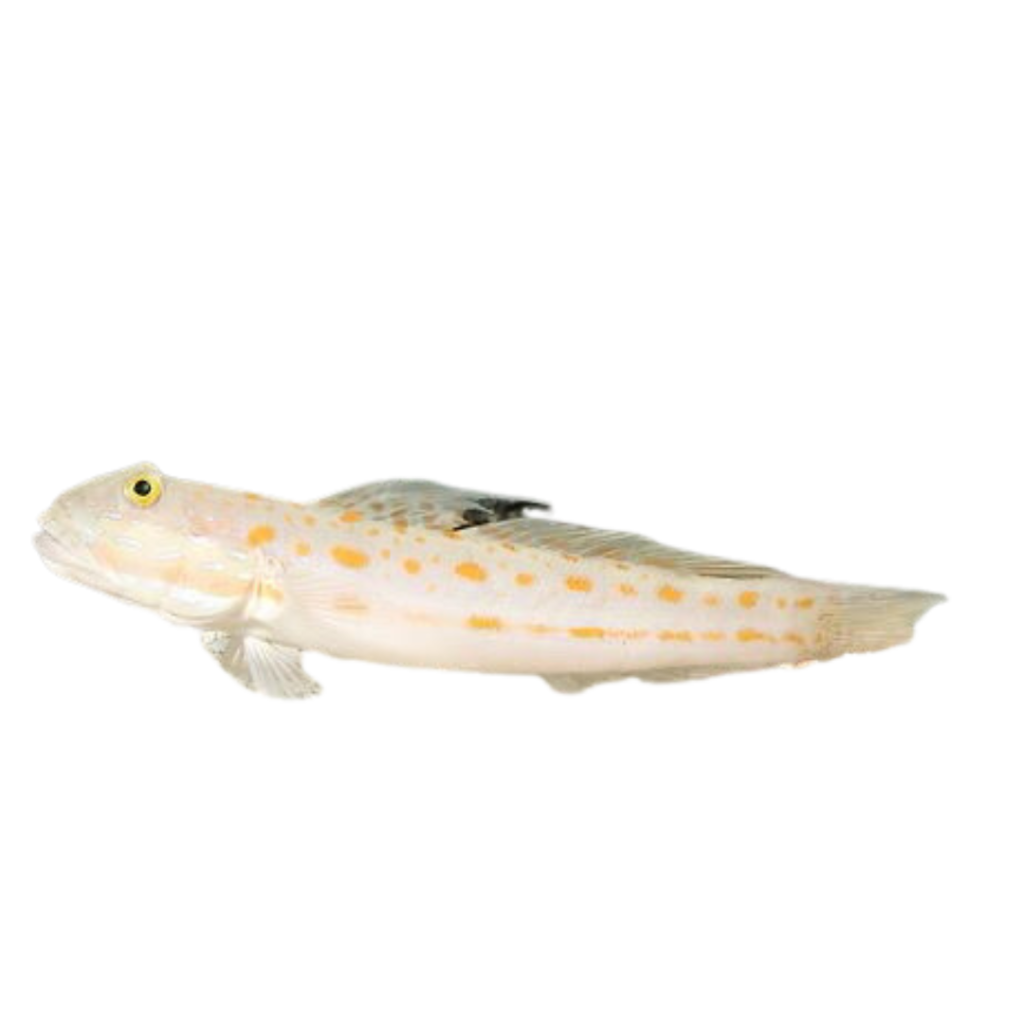
The Diamond Watchman Goby, also known as the Orange Spotted Goby, is a small, sand-sifting fish that can help control algae indirectly by consuming detritus and leftover food, reducing nutrient levels in the tank.
They are native to the Indo-Pacific region and grow up to 6 inches in length. This fish requires a tank of at least 30 gallons with a sandy substrate and plenty of hiding spots. Diamond Watchman Gobies are generally peaceful and reef-safe but may be territorial with other bottom-dwelling fish.
Related: Cheap Saltwater Fish for Your Aquarium (Beginner Friendly)
Chitons
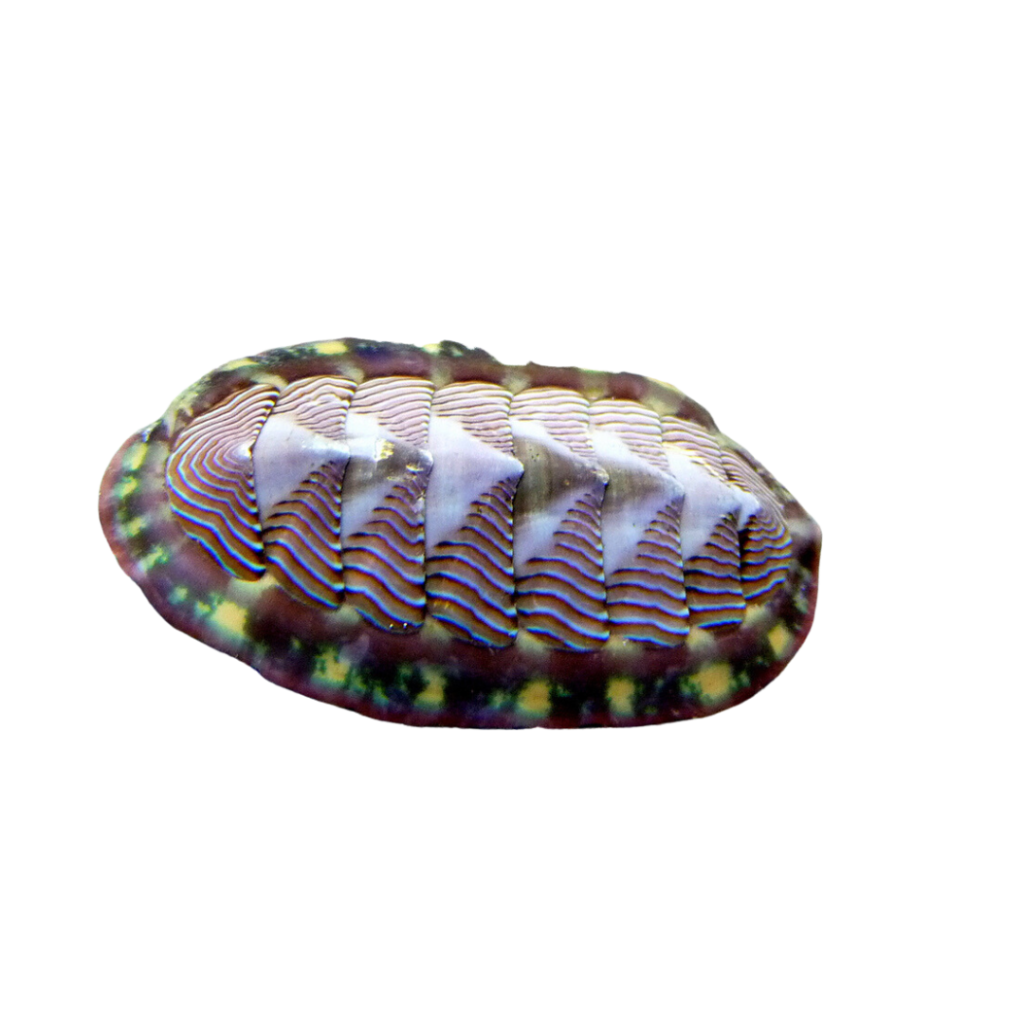
Chitons are unique, mollusk-like invertebrates that graze on various types of algae, including diatoms, hair algae, and coralline algae. They are found in oceans worldwide and can grow up to 4 inches in length, depending on the species.
Chitons are generally reef-safe and require a tank with stable water parameters and plenty of live rock to graze on.
Rabbitfish
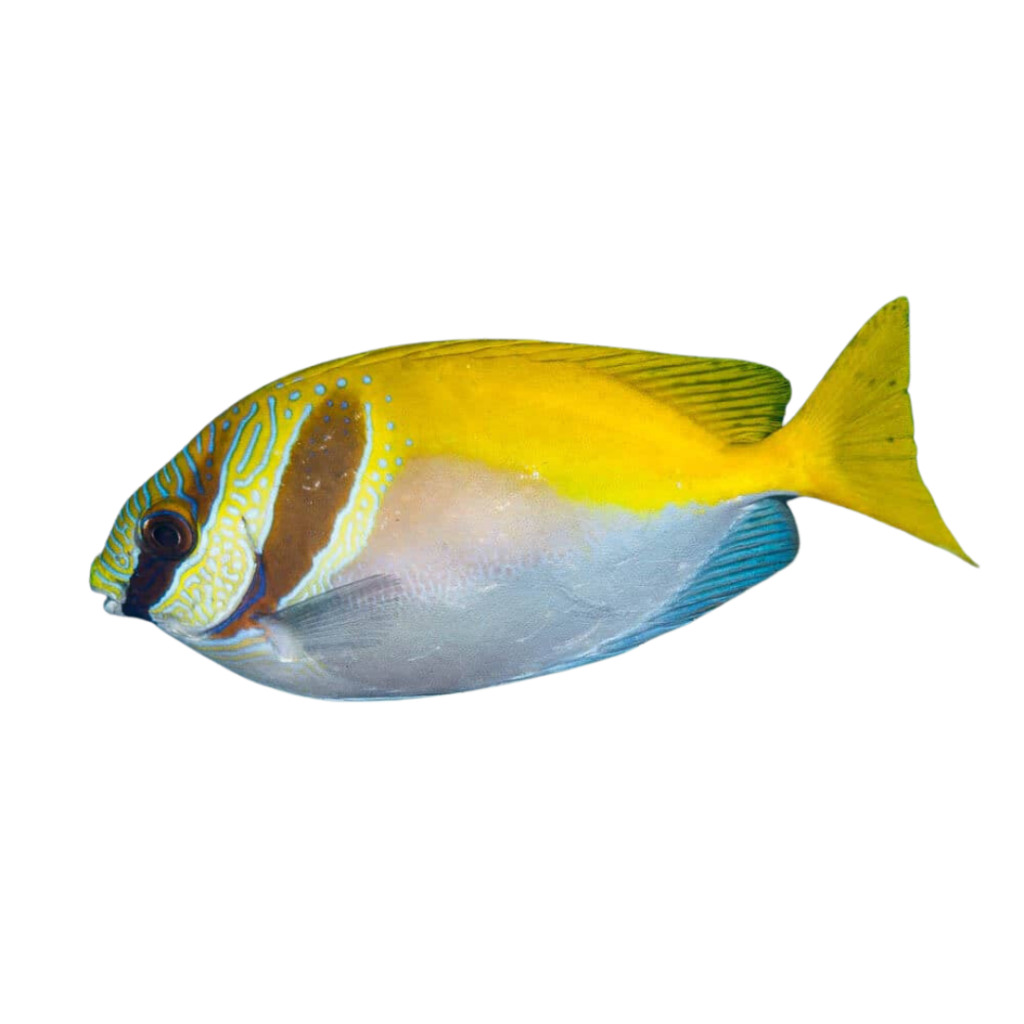
Rabbitfish, such as the One Spot Foxface or the Virgate Rabbitfish, are known for their efficient algae consumption, primarily feeding on macroalgae. They are native to the Indo-Pacific region and grow up to 9 inches in length.
Rabbitfish require a tank of at least 125 gallons with plenty of swimming space and live rock. They are generally peaceful and reef-safe but have venomous spines that can cause painful injuries.
Emerald Crabs

Emerald Crabs are small, green crustaceans known for their ability to consume bubble algae, which can be difficult for other algae-eating creatures to manage.
They are native to the Caribbean Sea and grow up to 2 inches in length. Emerald Crabs are generally reef-safe and require a tank of at least 20 gallons with plenty of live rock and hiding spots.
Related: Emerald Crabs: Do They Really Eat Bubble Algae?
Margarita Snails
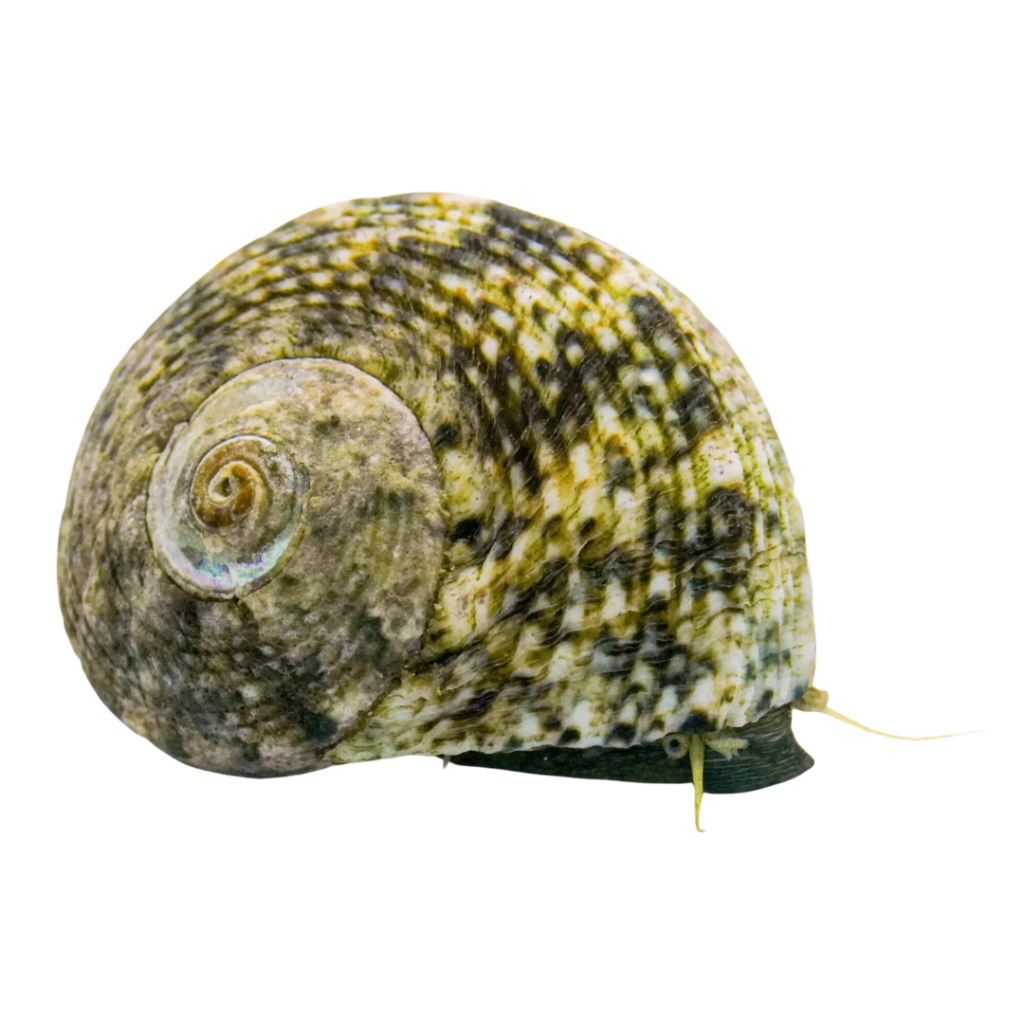
Margarita Snails are small, hardy snails that can help control algae by consuming various types, including diatoms, hair algae, and cyanobacteria. They are native to the Eastern Pacific Ocean and grow up to 1 inch in diameter. Margarita Snails are reef-safe and require a tank with stable water parameters and plenty of live rock to graze on.
Nerite Snails
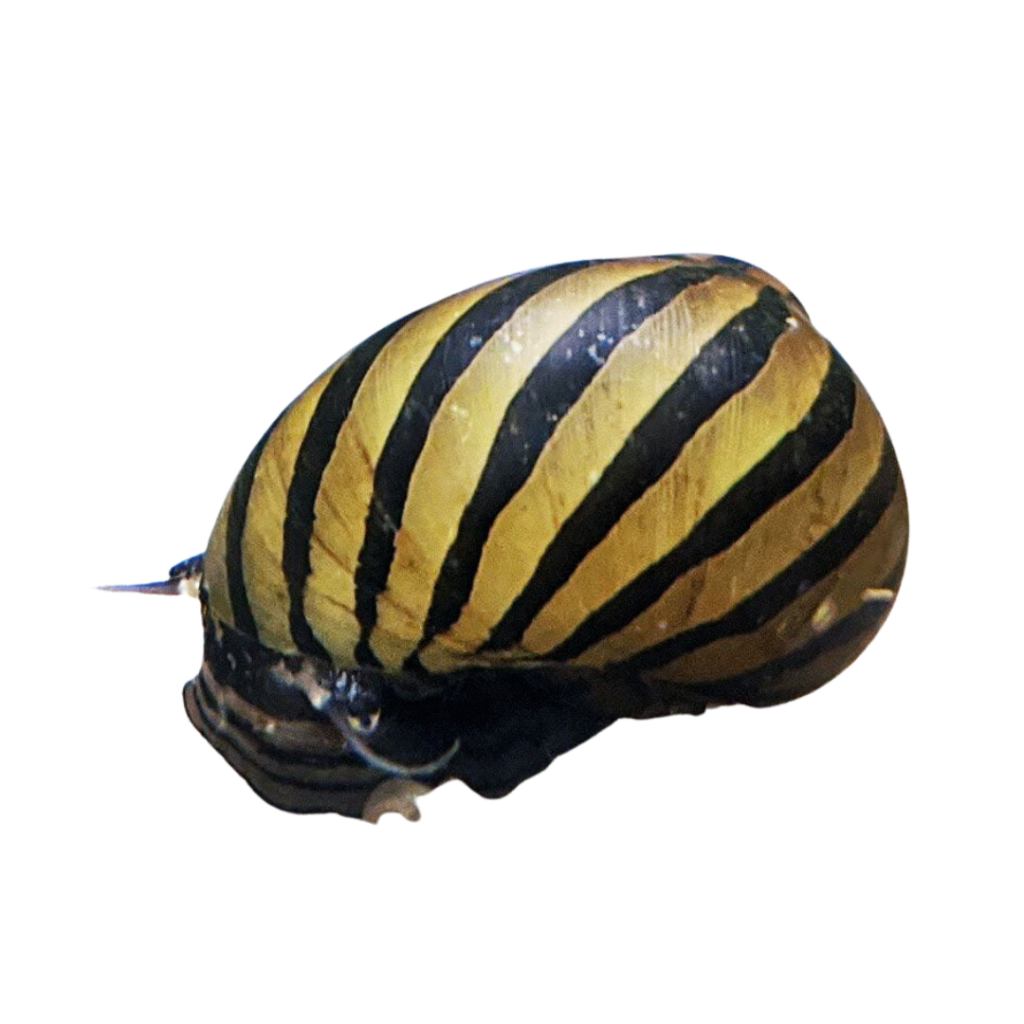
Nerite Snails are small, colorful snails that are efficient at consuming algae, particularly diatoms, hair algae, and cyanobacteria. They are native to various oceans worldwide and grow up to 1 inch in diameter.
Nerite Snails are reef-safe and require a tank with stable water parameters and plenty of live rock to graze on. They are generally peaceful and can be housed in tanks of at least 10 gallons.
Cerith Snails
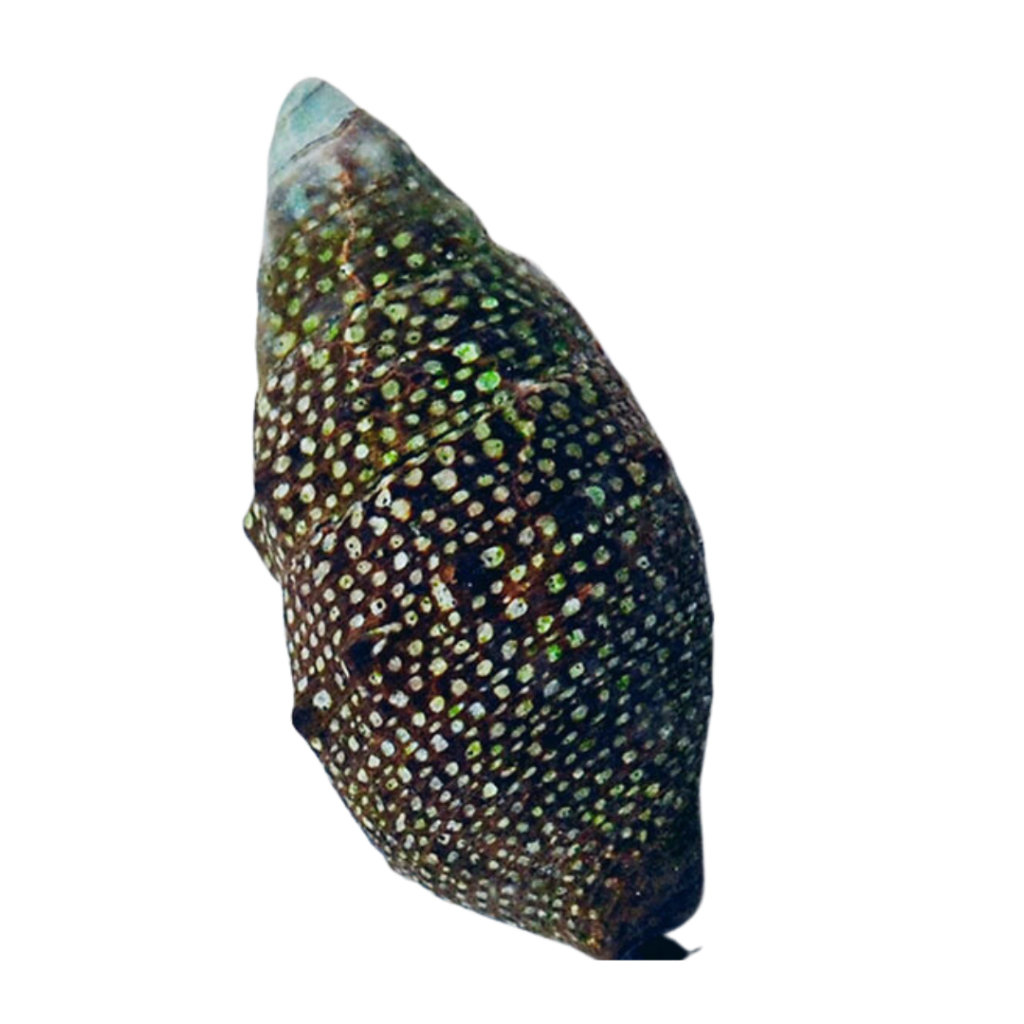
Cerith Snails are small, elongated snails that are efficient at consuming algae, particularly diatoms, hair algae, and cyanobacteria. They are native to the Caribbean Sea and can grow up to 1.5 inches in length.
Cerith Snails are reef-safe and require a tank with stable water parameters and plenty of live rock to graze on. They are generally peaceful and can be housed in tanks of at least 10 gallons.
Best saltwater algae eating fish + Inverts

Incorporating algae-eating fish and invertebrates into your saltwater tank can be an effective and natural way to combat algae growth and maintain a balanced, healthy ecosystem. With so many species to choose from, each with unique characteristics and algae-eating capabilities, finding the perfect combination for your aquarium might take some experimentation.
A few of my personal favorites include the Lawnmower Blenny for its quirky personality and efficiency in consuming hair algae, the Emerald Crab for its unique ability to tackle bubble algae, and the Foxface Rabbitfish for its striking appearance and voracious appetite for macroalgae.
When selecting algae-eating fish and invertebrates, it is essential to consider factors such as size, temperament, and reef compatibility. Ensure that the species you choose will coexist peacefully with your tank’s current inhabitants and thrive in the given environment.
Related: Aiptasia Eating Filefish: The Ultimate Solution for Aiptasia Control
Additionally, remember that while algae-eating fish and invertebrates can help control algae growth, maintaining proper water parameters, regular water changes, and avoiding overfeeding are also crucial to preventing excess algae from forming in the first place.
By carefully selecting the right algae-eating fish and invertebrates for your saltwater tank, you’ll not only contribute to a healthier, cleaner aquarium but also add diversity and visual interest for an even more enjoyable and rewarding experience.
Read Next: The Hardiest Saltwater Fish: Top Picks From Our Experts

